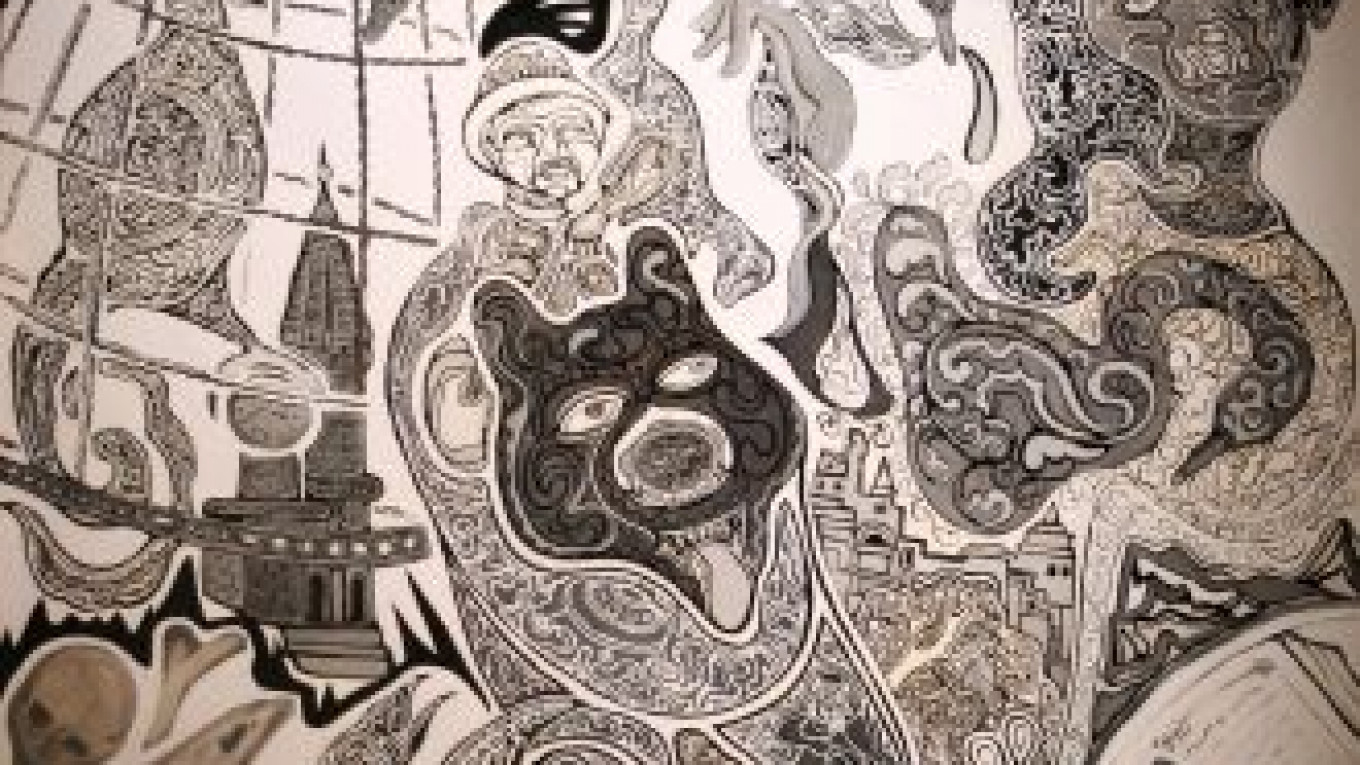Siberian artist Andrei Shcherbakov has drawn on the myths and legends of the indigenous people of that vast territory for his paintings that were recently on show at the Atelier Gallery No. 2 in the Winzavod Center for Contemporary Art.
The gallery has backed his work for the last three years, even buying oils for him after he simply turned up one day.
“The gallery usually has its own circle of artists, but Andrei Shcherbakov just came off the street with his own pictures,” said the gallery’s curator, Valeria Kurbova.
Kurbova was immediately interested and asked Shcherbakov whether he could do his ethnographic art on a large scale.
“Every single centimeter is filled with symbols and totemism. Every single centimeter is filled with meaning, which is what attracted me to this artist,” she said.
Contemporary artists are more involved in making projects than expressing ideas, she said. “But Andrei can express the idea of the uniqueness of the richness of the folklore of the indigenous people and show them in the guise of a picture.”
Shcherbakov’s interest in the Siberian indigenous people began at school. His family lived in a small Siberian village and he was sent to school in Surgut where his fellow pupils included Khanty and Mansi.
He has spent 10 years living with various peoples and continues to return to them for inspiration. He even worked in a kindergarten for some time where he had to learn the people’s tales.
Shcherbakov talks of the 19th-century scientist Dmitry Mendeleyev, creator of the table of elements that is named after him, who once said Russian power will spring from Siberia, talking about the harnessing of the valuable elements in Siberian land.
Instead of natural resources, Shcherbakov sees the native people as that treasure. “In the sense of culture, they are diamonds. There are wonderful writers, poets, composers. They know them and translate them even in Europe,” he said.
“I want to draw attention to the greatness of the subjects of these fairy tales and to show how rich a country Russia is,” said Kurbova, who noted that “Russians, unlike in the West, are cool toward this kind of ethnographic art. … They don’t value the art or the philosophy.”
The exhibit finished Monday, but the gallery, which owns the rights to a number of his works, is selling the pieces. The average price is about 5,000 euros ($7,000), Shcherbakov said.
For more information, contact Atelier Gallery No. 2. Winzavod Center for Contemporary Art. 1 4th Syromyatnichesky Pereulok, Bldg. 6. Metro Chkalovskaya, Kurskaya. Tel. 916-4646.
A Message from The Moscow Times:
Dear readers,
We are facing unprecedented challenges. Russia's Prosecutor General's Office has designated The Moscow Times as an "undesirable" organization, criminalizing our work and putting our staff at risk of prosecution. This follows our earlier unjust labeling as a "foreign agent."
These actions are direct attempts to silence independent journalism in Russia. The authorities claim our work "discredits the decisions of the Russian leadership." We see things differently: we strive to provide accurate, unbiased reporting on Russia.
We, the journalists of The Moscow Times, refuse to be silenced. But to continue our work, we need your help.
Your support, no matter how small, makes a world of difference. If you can, please support us monthly starting from just $2. It's quick to set up, and every contribution makes a significant impact.
By supporting The Moscow Times, you're defending open, independent journalism in the face of repression. Thank you for standing with us.
Remind me later.


